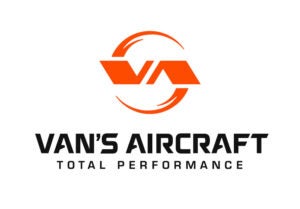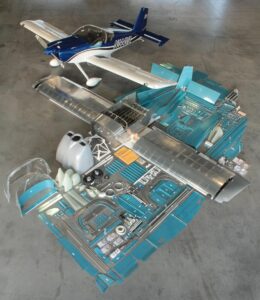 Van’s Aircraft founder Richard VanGrunsven today announced changes at the company aimed at addressing “serious cash flow issues, which must be addressed quickly to ensure ongoing operations. We are confident that we can work through this situation, but some changes are required,” he says. Van’s posted an extensive explanation of the situation in addition to the video featuring founder VanGrunsven. (You can read it here.)
Van’s Aircraft founder Richard VanGrunsven today announced changes at the company aimed at addressing “serious cash flow issues, which must be addressed quickly to ensure ongoing operations. We are confident that we can work through this situation, but some changes are required,” he says. Van’s posted an extensive explanation of the situation in addition to the video featuring founder VanGrunsven. (You can read it here.)
Van’s current challenges result from “a combination of significant events over a relatively short period of time [that have] increased costs, doubled normal inventory levels, slowed deliveries, and strained our cash flow to the breaking point,” the company says. It cites increases in manufacturing costs still evident from the COVID slowdown, an issue with primer used by a subcontractor in quickbuild components and the most recent problems with laser-cut parts, which were a response to help increase production capacity at a time when Van’s was experiencing historically high demand. Builders discovered that the laser-cut parts tended to crack during the dimpling process. “Although our testing proved that laser-cut parts are functionally equivalent to punched parts, belief among many builders is that they are unsuitable for use,” the company says. “This has resulted in an unmanageable number of requests to replace laser-cut parts and cancel orders. More than 1800 customers are currently affected by this issue, some of whom have received more than one kit.”
 As part of the announcement, Van’s said that “starting today through mid-November, Van’s will be focused on assessing the internal changes necessary to address these issues. This means some of the typical day-to-day operations at Van’s will be affected while our team develops plans to correct the problem.”
As part of the announcement, Van’s said that “starting today through mid-November, Van’s will be focused on assessing the internal changes necessary to address these issues. This means some of the typical day-to-day operations at Van’s will be affected while our team develops plans to correct the problem.”
Those changes include streamlining the company’s efforts to focus on replacing laser-cut parts for existing builders and reassessing its manufacturing processes. “During this period, shipments will be delayed, kit orders will not be processed, and refunds will not be issued,” the company says. “We will be unable to conduct factory tours and demo flights. We are adjusting our daily operating hours. Starting Monday, October 30th we will be open from 8:00 a.m. to 4:00 p.m. Pacific Time each business day. Our builder technical support hours will shift to 8:00 to 9:30 a.m. and 3:00 to 4:00 p.m. each business day. This is a permanent change.”
In the background, Van’s has “assembled a small team of experienced advisors to assist us” from Hamstreet & Associates, a Portland, Oregon-based firm that “leads troubled companies through financial and operational crises, and delivers results.” Mikael Via who had served as Glasair Aviation in the early 2000s and developed the Two Weeks to Taxi builder-assist program will be joining Van’s Aircraft as interim CEO. In addition, Hamstreet is expected to provide financial expertise as well as other interim officers to help Van’s move forward.
Builders and potential Van’s customers are likely to wonder about pricing and availability in the future. “Van’s Aircraft faces several challenges that require us to take time between now and mid-November to perform an internal assessment of our inventory, production, and shipping capabilities as well as overall operating efficiencies,” Van’s says. “During this time, we will be evaluating all reasonable means of satisfying builder concerns regarding laser-cut parts. At the same time, we will be reviewing the costing of our parts and kits.”
Van’s is expected to issue updates via its website in the near future.














Proof that even the biggest seller can have production issues. At least they have the resources (I hope!) to continue. Vans is good people, and the planes are the best, no doubt, but the pandemic really put a hurting on so many business’ that it really is hard to bounce back, many unfortunately haven’t. Fingers crossed the Van’s team can pull it off!
The measure of a business is how they respond to a crisis. It sounds like Vans is taking action to get the help needed for the situation they are facing concerning cash flow and operating methods. No company is immune to financial adversity no matter how big or small. How the deal with what they are dealt sets apart those succeed. I am rooting for you Vans. Hopeful future RV-7A builder.
The high growth rate and high demand for kits and parts can cause errors in communicating requirements to subcontractors.
The tech company I was with had a similar issue and it took a year to recover.
I’m confident that Vans has , or will have, the manpower in place to recover and get back on smoothly handing the increased demand for their kits and services.!!
This is a typical Harley Davidson story. They built the best people got on a list to get their bike . Sometimes waiting for a year and would sale for a profit before it was even built. Good for customers and Harley. Then they got greedy cut corners and farmed out to China. Now a Yamaha is more American than Harley. Keep it rare and the best and survival is a sure thing.
I wish Van’s a speedy recovery. They have a great product, a great team, and a very loyal customer base – all things that are essential to continuing success!
Builders say laser cut parts crack. Van’s says, by im[lication, they don’t. This story would be of much greater value if there was some investigative reporting as which is true. As it stands, the story doesn’t answer address the crux of the matter. Do the parts crack or don’t they?
They do crack and Van’s acknowledges it. At AirVenture, Van’s engineering showed that test coupons with cracks actually failed at locations other than the LCP-created crack.
We all know cracks are no good. A few here and there are manageable. The problem with Van’s laser cut parts is almost every hole was cracking.
You can’t build in a fuselage former that clearly has 90 of 106 holes cracked. The severity of the cracking has been highly downplayed.
Unfortunately I know this problem all too well.
Laser cut aluminum parts have brittle edges similar to welded aluminum parts. Vans engineering should consider using a water jet cutting process. In any case, fatigue testing is important for any new structural manufacturing process.